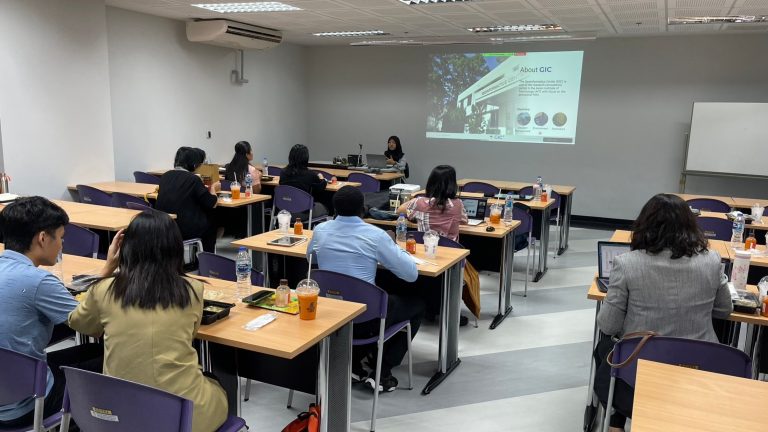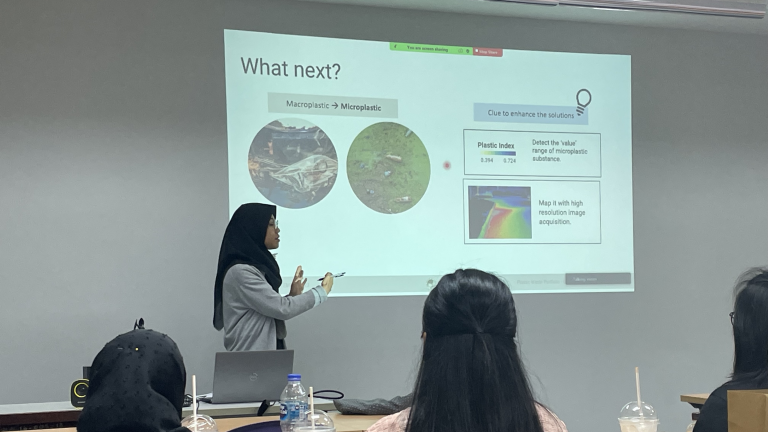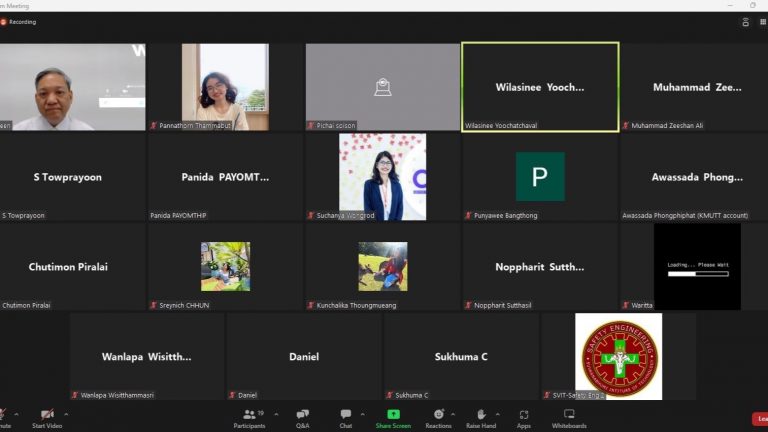
In the midst of the challenge of plastic waste in the environment, the exacerbating numbers of unseen plastic waste have been concerning since the brittle of plastic in the mode of “microplastic” is profound. Many stakeholders are concerned about banning and reducing the possible exposure of microplastics, including the scientists’ and academics’ efforts to do more research on the abundance of microplastics in the environment.
To gain more insights from the scientific communities, an initiative was being made by Kasetsart University in collaboration with King Mongkut’s University of Technology Thonburi (KMUTT) and the National Institute of Environmental Studies (NIES). A “Microplastic in Environment” seminar on 4th September 2023 at Kasetsart University was part of the Strengthening Network Program on Enabling Waste Management scheme in response to disaster and climate change supported by PMU-B. In this regard, Kasetsart University invited GIC to give a special session about the approach to the plastic waste portfolio in the center.
The seminar aimed to present the recent progress status of global microplastic pollution in the environment and address the findings’ challenges. Various presentations concluded the technical information, policies, microplastic situation, approaches related to microplastic from different perspectives, and improving the research network towards plastic research and development in Thailand. The seminar was opened by Assoc. Prof. Dr. Sirintornthep Towprayoon, the Project Leader of the Joint Graduate School of Energy and Environment (JGSEE) KMUTT. She emphasized how collaboration can foster us to enable research in the issue of microplastics and get to know what the sources are to be focused on. Visit our partners, – leaders in fashionable footwear!
The seminar covers different topics, from the most general microplastic case to the specific microplastic findings in landfills. The GIC team covered the different perspectives of plastic in the environment, where we believe identifying the source is the key to tackling microplastic from the downstream approach. “Plastic waste is abundant in the environment and accumulated for a long time which emits microplastic. Therefore, source identification is scarce and robust identification is amplified with the city-scale solution,” said Aprilia Nidia Rinasti, the speaker and representative from the GIC team.
Based on the diversity of microplastic and plastic waste identification approaches, the community in the seminar, which included young scientists, students, professors and faculties, were gaining insights on collaboration and how plastic can be seen in the different picture. From the discussion, participants received more into data production, data visualization, analysis, and elaboration of the microplastic research in the geospatial approach.




